Organizational Agility in Industry 4.0: A Systematic Literature Review
Abstract
:1. Introduction
2. Materials and Methods
2.1. Selection of Databases
2.2. Identification of Keywords and Search Strings
2.3. Results of Search
2.4. Inclusion and Exclusion Criteria
2.5. Quality Assessment
3. Descriptive Statistics
3.1. Year-Wise Publication
3.2. Highly Contributing Papers and Authors
3.3. Contribution of Publishers
3.4. Contribution of Databases
3.5. Contribution of Journals
3.6. Type of Publication
3.7. Contribution by Country
3.8. Keyword Statistics
3.9. Title Keyword Statistics
3.10. Network Analysis
4. Review Discussion
4.1. Industry 4.0 and Agility
4.2. Agility in Organization
4.2.1. Agility as a Consequence
4.2.2. Agility as a Driver
4.3. Key I4.0 Technologies of Agility
4.3.1. Smart Manufacturing
4.3.2. Cyber-Physical System
4.3.3. Cloud Computing
4.3.4. Big Data and Analytics
4.3.5. Augmented and Virtual Reality
4.3.6. Simulation
4.3.7. Internet of Things Platforms
4.3.8. Machine-to-Machine Communication
4.3.9. Sensors
4.4. Aspect of Agility in Industry 4.0
4.5. Agility Dimensions
- Supply chain
- Workforce
- Processes
- Strategy
- Information system
- Facilities
4.6. Agility Capabilities
- Facilities agility
- Flexibility agility
4.7. Agility Enablers
- Management agility
- Manufacturing agility
- Technology
5. Conclusions
Author Contributions
Funding
Institutional Review Board Statement
Informed Consent Statement
Data Availability Statement
Conflicts of Interest
References
- Lasi, H.; Fettke, P.; Kemper, H.G.; Feld, T.; Hoffmann, M. Industry 4.0. Bus. Inf. Syst. Eng. 2014, 6, 239–242. [Google Scholar] [CrossRef]
- Vaidya, S.; Ambad, P.; Bhosle, S. Industry 4.0—A glimpse. Procedia Manuf. 2018, 20, 233–238. [Google Scholar] [CrossRef]
- Zhou, K.; Liu, T.; Zhou, L. Industry 4.0: Towards future industrial opportunities and challenges. In Proceedings of the 2015 12th International Conference on Fuzzy Systems and Knowledge Discovery (FSKD), Zhangjiajie, China, 15–17 August 2015; pp. 2147–2152. [Google Scholar]
- Cimini, C.; Boffelli, A.; Lagorio, A.; Kalchschmidt, M.; Pinto, R. How do industry 4.0 technologies influence organisational change? An empirical analysis of Italian SMEs. J. Manuf. Technol. Manag. 2020, 32, 695–721. [Google Scholar] [CrossRef]
- Schumacher, A.; Erol, S.; Sihn, W. A maturity model for assessing Industry 4.0 readiness and maturity of manufacturing enterprises. Procedia Cirp 2016, 52, 161–166. [Google Scholar] [CrossRef]
- Zawadzki, P.; Żywicki, K. Smart product design and production control for effective mass customization in the Industry 4.0 concept. Manag. Prod. Eng. Rev. 2016, 7, 105–112. [Google Scholar] [CrossRef]
- Kohnová, L.; Papula, J.; Salajová, N. Internal factors supporting business and technological transformation in the context of Industry 4.0. Bus. Theory Pract. 2019, 20, 137–145. [Google Scholar] [CrossRef]
- Luthra, S.; Mangla, S.K. Evaluating challenges to Industry 4.0 initiatives for supply chain sustainability in emerging economies. Process Saf. Environ. Prot. 2018, 117, 168–179. [Google Scholar] [CrossRef]
- Götz, M. The industry 4.0 induced agility and new skills in clusters. Forsight Sti Gov. 2019, 13, 72–83. [Google Scholar]
- Matthiae, M.; Richter, J. Industry 4.0-Induced Change Factors and the Role of Organizational Agility. Muduli, A. Workforce agility: Examining the role of organizational practices and psychological empowerment. Glob. Bus. Organ. Excell. 2018, 36, 46–56. [Google Scholar]
- Walter, A.T. Organizational agility: Ill-defined and somewhat confusing? A systematic literature review and conceptualization. Manag. Rev. Q. 2021, 71, 343–391. [Google Scholar] [CrossRef] [Green Version]
- Kurniawan, R.; Hamsal, M. Shaping Business Process Agility in Telecommunication 4.0. Int. J. Appl. Sci. Eng. 2019, 16, 15–23. [Google Scholar]
- Kurniawana, R.; Hamsalb, I.M. Achieving Decision-Making Quality and Organisational Agility in Innovation Portfolio Management in Telecommunication 4.0. Int. J. Innov. Creat. Chang. 2019, 8, 332–356. [Google Scholar]
- Elnagar, S.; Weistroffer, H.; Thomas, M. Agile requirement engineering maturity framework for industry 4.0. In Proceedings of the European, Mediterranean, and Middle Eastern Conference on Information Systems, Limassol, Cyprus, 4–5 October 2018; pp. 405–418. [Google Scholar]
- Akkaya, B. Leadership 5.0 in Industry 4.0: Leadership in perspective of organizational agility. In Managing Operations Throughout Global Supply Chains; IGI Global: Hershey, PA, USA, 2019; pp. 136–158. [Google Scholar]
- Tarigan, Z.J.H.; Siagian, H.; Jie, F. Impact of Internal Integration, Supply Chain Partnership, Supply Chain Agility, and Supply Chain Resilience on Sustainable Advantage. Sustainability 2021, 13, 5460. [Google Scholar] [CrossRef]
- Miceli, A.; Hagen, B.; Riccardi, M.P.; Sotti, F.; Settembre-Blundo, D. Thriving, not just surviving in changing times: How sustainability, agility and digitalization intertwine with organizational resilience. Sustainability 2021, 13, 2052. [Google Scholar] [CrossRef]
- Al-Omoush, K.S.; Simón-Moya, V.; Sendra-García, J. The impact of social capital and collaborative knowledge creation on e-business proactiveness and organizational agility in responding to the COVID-19 crisis. J. Innov. Knowl. 2020, 5, 279–288. [Google Scholar] [CrossRef]
- Landrum, N.E.; Ohsowski, B. Identifying worldviews on corporate sustainability: A content analysis of corporate sustainability reports. Bus. Strategy Environ. 2018, 27, 128–151. [Google Scholar] [CrossRef] [Green Version]
- Lozano, R. A holistic perspective on corporate sustainability drivers. Corp. Soc. Responsib. Environ. Manag. 2015, 22, 32–44. [Google Scholar] [CrossRef]
- Elkington, J. Partnerships from cannibals with forks: The triple bottom line of 21st-century business. Environ. Qual. Manag. 1998, 8, 37–51. [Google Scholar] [CrossRef]
- Elkington, J. Enter the triple bottom line. In The Triple Bottom Line; Routledge: London, UK, 2013; pp. 23–38. [Google Scholar]
- Goh, C.S.; Chong, H.Y.; Jack, L.; Faris, A.F.M. Revisiting triple bottom line within the context of sustainable construction: A systematic review. J. Clean. Prod. 2020, 252, 119884. [Google Scholar] [CrossRef]
- Norman, W.; MacDonald, C. Getting to the bottom of “triple bottom line”. Bus. Ethics Q. 2004, 14, 243–262. [Google Scholar] [CrossRef] [Green Version]
- Muñoz-Pascual, L.; Curado, C.; Galende, J. The triple bottom line on sustainable product innovation performance in SMEs: A mixed methods approach. Sustainability 2019, 11, 1689. [Google Scholar] [CrossRef] [Green Version]
- Ejsmont, K.; Gladysz, B.; Kluczek, A. Impact of industry 4.0 on sustainability—Bibliometric literature review. Sustainability 2020, 12, 5650. [Google Scholar] [CrossRef]
- Duarte, S.; do Rosário Cabrita, M.; Cruz-Machado, V. Business model, lean and green management and industry 4.0: A conceptual relationship. In Proceedings of the International Conference on Management Science and Engineering Management, Phuket, Thailand, 24–26 May 2019; pp. 359–372. [Google Scholar]
- Oztemel, E.; Gursev, S. Literature review of Industry 4.0 and related technologies. J. Intell. Manuf. 2020, 31, 127–182. [Google Scholar] [CrossRef]
- Kerin, M.; Pham, D.T. A review of emerging industry 4.0 technologies in remanufacturing. J. Clean. Prod. 2019, 237, 117805. [Google Scholar] [CrossRef]
- Kamble, S.S.; Gunasekaran, A.; Gawankar, S.A. Sustainable Industry 4.0 framework: A systematic literature review identifying the current trends and future perspectives. Process Saf. Environ. Prot. 2018, 117, 408–425. [Google Scholar] [CrossRef]
- Alcácer, V.; Cruz-Machado, V. Scanning the industry 4.0: A literature review on technologies for manufacturing systems. Eng. Sci. Technol. 2019, 22, 899–919. [Google Scholar] [CrossRef]
- Zheng, T.; Ardolino, M.; Bacchetti, A.; Perona, M. The applications of Industry 4.0 technologies in manufacturing context: A systematic literature review. Int. J. Prod. Res. 2021, 59, 1922–1954. [Google Scholar] [CrossRef]
- Buer, S.V.; Strandhagen, J.O.; Chan, F.T. The link between Industry 4.0 and lean manufacturing: Mapping current research and establishing a research agenda. Int. J. Prod. Res. 2018, 56, 2924–2940. [Google Scholar] [CrossRef] [Green Version]
- Kim, J.H. A review of cyber-physical system research relevant to the emerging IT trends: Industry 4.0, IoT, big data, and cloud computing. J. Ind. Integr. Manag. 2017, 2, 1750011. [Google Scholar] [CrossRef]
- Amjad, M.S.; Rafique, M.Z.; Hussain, S.; Khan, M.A. A new vision of LARG Manufacturing—A trail towards Industry 4.0. CIRP J. Manuf. Sci. Technol. 2020, 31, 377–393. [Google Scholar] [CrossRef]
- Knopf, J.W. Doing a literature review. PS Political Sci. Politics 2006, 39, 127–132. [Google Scholar] [CrossRef] [Green Version]
- Rozas, L.W.; Klein, W.C. The value and purpose of the traditional qualitative literature review. J. Evid.-Based Soc. Work 2010, 7, 387–399. [Google Scholar] [CrossRef]
- Broekkamp, H.; van Hout-Wolters, B. The gap between educational research and practice: A literature review, symposium, and questionnaire. Educ. Res. Eval. 2007, 13, 203–220. [Google Scholar] [CrossRef] [Green Version]
- Webster, J.; Watson, R.T. Analyzing the past to prepare for the future: Writing a literature review. MIS Q. 2002, 26, xiii–xxiii. [Google Scholar]
- Dunne, C. The place of the literature review in grounded theory research. Int. J. Soc. Res. Methodol. 2011, 14, 111–124. [Google Scholar] [CrossRef]
- Tranfield, D.; Denyer, D.; Smart, P. Towards a methodology for developing evidence-informed management knowledge by means of systematic review. Br. J. Manag. 2003, 14, 207–222. [Google Scholar] [CrossRef]
- Pittaway, L.; Robertson, M.; Munir, K.; Denyer, D.; Neely, A. Networking and innovation: A systematic review of the evidence. Int. J. Manag. Rev. 2004, 5, 137–168. [Google Scholar] [CrossRef]
- Sony, M.; Naik, S. Key ingredients for evaluating Industry 4.0 readiness for organizations: A literature review. Benchmarking Int. J. 2019, 27, 2213–2232. [Google Scholar] [CrossRef]
- Saucedo-Martínez, J.A.; Pérez-Lara, M.; Marmolejo-Saucedo, J.A.; Salais-Fierro, T.E.; Vasant, P. Industry 4.0 framework for management and operations: A review. J. Ambient. Intell. Humaniz. Comput. 2018, 9, 789–801. [Google Scholar] [CrossRef]
- Pattinson, S.; Preece, D.; Dawson, P. In search of innovative capabilities of communities of practice: A systematic review and typology for future research. Manag. Learn. 2016, 47, 506–524. [Google Scholar] [CrossRef]
- Fayezi, S.; Zutshi, A.; O’Loughlin, A. Understanding and development of supply chain agility and flexibility: A structured literature review. Int. J. Manag. Rev. 2017, 19, 379–407. [Google Scholar] [CrossRef]
- Thames, L.; Schaefer, D. Software-defined cloud manufacturing for industry 4.0. Procedia Cirp 2016, 52, 12–17. [Google Scholar] [CrossRef] [Green Version]
- Culot, G.; Nassimbeni, G.; Orzes, G.; Sartor, M. Behind the definition of Industry 4.0: Analysis and open questions. Int. J. Prod. Econ. 2020, 226, 107617. [Google Scholar] [CrossRef]
- Rane, S.B.; Narvel, Y.A.M. Re-designing the business organization using disruptive innovations based on blockchain-IoT integrated architecture for improving agility in future Industry 4.0. Benchmarking Int. J. 2019, 28, 1883–1908. [Google Scholar]
- Genest, M.C.; Gamache, S. Prerequisites for the Implementation of Industry 4.0 in Manufacturing SMEs. Procedia Manuf. 2020, 51, 1215–1220. [Google Scholar] [CrossRef]
- Tortorella, G.L.; Pradhan, N.; Macias de Anda, E.; Trevino Martinez, S.; Sawhney, R.; Kumar, M. Designing lean value streams in the fourth industrial revolution era: Proposition of technology-integrated guidelines. Int. J. Prod. Res. 2020, 58, 5020–5033. [Google Scholar] [CrossRef]
- Perakovic, D.; Perisa, M.; Cvitic, I.; Zoric, P. Identification of the relevant parameters for modeling the ecosystem elements in Industry 4.0. In Proceedings of the 4th EAI International Conference on Management of Manufacturing Systems; Springer: Cham, Switzerland, 2020; pp. 111–123. [Google Scholar]
- Hyun, Y.; Hosoya, R.; Kamioka, T. The Moderating Role of Democratization Culture: Improving Agility through the Use of Big Data Analytics. In Proceedings of the Pacific Asia Conference on Information Systems (PACIS 2019), Xi’an, China, 8–12 July 2019; p. 181. [Google Scholar]
- Lee, J.; Um, C.; Shin, J.; Jeong, J. Design and Applications of Agile Factory AaaS Architecture Based on Container-based Virtualized Automation Control Unit. Procedia Comput. Sci. 2019, 151, 622–629. [Google Scholar] [CrossRef]
- Bauer, W.; Vocke, C. Transforming to an Agile Enterprise–How to Handle the Challenge of Organizational Ambidexterity. In Proceedings of the International Conference on Applied Human Factors and Ergonomics, Orlando, FL, USA, 21–25 July 2018; pp. 415–423. [Google Scholar]
- Saengchai, S.; Jermsittiparsert, K. Coping Strategy to Counter the Challenges towards Implementation of Industry 4.0 in Thailand: Role of Supply Chain Agility and Resilience. Int. J. Supply Chain. Manag. 2019, 8, 733. [Google Scholar]
- Bauer, W.; Schlund, S.; Vocke, C. Working life within a hybrid world–how digital transformation and agile structures affect human functions and increase quality of work and business performance. In Proceedings of the International Conference on Applied Human Factors and Ergonomics, Los Angeles, CA, USA, 17–21 July 2017; pp. 3–10. [Google Scholar]
- Shu, B.; Solvang, B. Architecture for task-dependent human-robot collaboration. In Proceedings of the 2021 IEEE/SICE International Symposium on System Integration (SII), Iwaki, Japan, 11–14 January 2021; pp. 207–212. [Google Scholar]
- Butt, J. A Conceptual Framework to Support Digital Transformation in Manufacturing Using an Integrated Business Process Management Approach. Designs 2020, 4, 17. [Google Scholar] [CrossRef]
- Yao, F.; Alkan, B.; Ahmad, B.; Harrison, R. Improving Just-in-Time Delivery Performance of IoT-Enabled Flexible Manufacturing Systems with AGV Based Material Transportation. Sensors 2020, 20, 6333. [Google Scholar] [CrossRef]
- Elnagar, S.; Thomas, M.A. Federated Deep Learning: A Conceptual Model and Applied Framework for Industry 4.0. 2020. Available online: https://aisel.aisnet.org/amcis2020/?utmsource=aisel.aisnet.org (accessed on 15 May 2021).
- Lyu, M.; Biennier, F.; Ghodous, P. Integration of ontologies to support Control as a Service in an Industry 4.0 context. Serv. Oriented Comput. Appl. 2021, 15, 127–140. [Google Scholar] [CrossRef]
- Hizam-Hanafiah, M.; Soomro, M.A. The situation of technology companies in industry 4.0 and the open innovation. J. Open Innov. Technol. Mark. Complex. 2021, 7, 34. [Google Scholar] [CrossRef]
- Li, W.; Huynh, B.H.; Akhtar, H.; Myo, K.S. Discrete Event Simulation as a Robust Supporting Tool for Smart Manufacturing. In Implementing Industry 4.0: The Model Factory as the Key Enabler for the Future of Manufacturing; Springer: Cham, Switzerland, 2021; p. 287. [Google Scholar]
- Del Giudice, M.; Scuotto, V.; Papa, A.; Tarba, S.; Bresciani, S.; Warkentin, M. A self-tuning model for smart manufacturing SMEs: Effects on digital innovation. J. Prod. Innov. Manag. 2020, 38, 68–89. [Google Scholar] [CrossRef]
- Sharma, M.; Sehrawat, R. Quantifying SWOT analysis for cloud adoption using FAHP-DEMATEL approach: Evidence from the manufacturing sector. J. Enterp. Inf. Manag. 2020, 33, 1111–1152. [Google Scholar] [CrossRef]
- Garbie, I.; Garbie, A. Outlook of Requirements of Manufacturing Systems for Industry 4.0. In Proceedings of the 2020 Advances in Science and Engineering Technology International Conferences (ASET), Dubai, United Arab Emirates, 4 Februaty–9 April 2020; pp. 1–6. [Google Scholar]
- Alkan, D.P. Re-Shaping Business Strategy in the Era of Digitization. In Handbook of Research on Strategic Fit and Design in Business Ecosystems; IGI Global: Hershey, PA, USA, 2020; pp. 76–97. [Google Scholar]
- Koch, C.; Blind, K. Towards Agile Standardization: Testbeds in Support of Standardization for the IIoT. IEEE Trans. Eng. Manag. 2020, 68, 59–74. [Google Scholar] [CrossRef]
- Kusiak, A. Smart manufacturing. Int. J. Prod. Res. 2018, 56, 508–517. [Google Scholar] [CrossRef]
- D’Souza, F.; Costa, J.; Pires, J.N. Development of a solution for adding a collaborative robot to an industrial AGV. Ind. Robot. Int. J. Robot. Res. Appl. 2020, 47, 723–735. [Google Scholar] [CrossRef]
- Liu, B.; Glock, T.; Betancourt, V.P.; Kern, M.; Sax, E.; Becker, J. Model Driven Development Process for a Service-oriented Industry 4.0 System. In Proceedings of the 2020 9th International Conference on Industrial Technology and Management (ICITM), Oxford, UK, 11–13 February 2020; pp. 78–83. [Google Scholar]
- Witczak, M.; Majdzik, P.; Stetter, R.; Lipiec, B. Multiple agv fault-tolerant within an agile manufacturing warehouse. IFAC-PapersOnLine 2019, 52, 1914–1919. [Google Scholar] [CrossRef]
- Iqbal, A.; Zhao, G.; Suhaimi, H.; He, N.; Hussain, G.; Zhao, W. Readiness of subtractive and additive manufacturing and their sustainable amalgamation from the perspective of Industry 4.0: A comprehensive review. Int. J. Adv. Manuf. Technol. 2020, 111, 2475–2498. [Google Scholar] [CrossRef]
- Cheng, H.; Xue, L.; Wang, P.; Zeng, P.; Yu, H. Ontology-based web service integration for flexible manufacturing systems. In Proceedings of the 2017 IEEE 15th International Conference on Industrial Informatics (INDIN), Emden, Germany, 24–26 July 2017; pp. 351–356. [Google Scholar]
- Wan, J.; Tang, S.; Li, D.; Imran, M.; Zhang, C.; Liu, C.; Pang, Z. Reconfigurable smart factory for drug packing in healthcare industry 4.0. IEEE Trans. Ind. Inform. 2018, 15, 507–516. [Google Scholar] [CrossRef]
- Bueno, A.F.; Godinho Filho, M.; Frank, A.G. Smart production planning and control in the Industry 4.0 context: A systematic literature review. Comput. Ind. Eng. 2020, 149, 106774. [Google Scholar] [CrossRef]
- Niakan, F.; Baboli, A.; Moyaux, T.; Botta-Genoulaz, V. A bi-objective model in sustainable dynamic cell formation problem with skill-based worker assignment. J. Manuf. Syst. 2016, 38, 46–62. [Google Scholar] [CrossRef]
- Azarmipour, M.; Elfaham, H.; Gries, C.; Epple, U. Plc 4.0: A control system for industry 4.0. In Proceedings of the IECON 2019—45th Annual Conference of the IEEE Industrial Electronics Society, Lisbon, Portugal, 14–17 October 2019; Volume 1, pp. 5513–5518. [Google Scholar]
- Seif, A.; Toro, C.; Akhtar, H. Implementing industry 4.0 asset administrative shells in mini factories. Procedia Comput. Sci. 2019, 159, 495–504. [Google Scholar] [CrossRef]
- Chen, D.; Ding, J.; Gao, M.; Ma, D.; Liu, D. Form gene clustering method about pan-ethnic-group products based on emotional semantic. Chin. J. Mech. Eng. 2016, 29, 1134–1144. [Google Scholar] [CrossRef]
- Lins, T.; Oliveira, R.A.R.; Correia, L.H.; Silva, J.S. Industry 4.0 Retrofitting. In Proceedings of the 2018 VIII Brazilian Symposium on Computing Systems Engineering (SBESC), Salvador, Brazil, 5–8 November 2018; pp. 8–15. [Google Scholar]
- Ramirez-Peña, M.; Abad Fraga, F.J.; Sánchez Sotano, A.J.; Batista, M. Shipbuilding 4.0 index approaching supply chain. Materials 2019, 12, 4129. [Google Scholar] [CrossRef] [Green Version]
- Moghaddam, M.; Nof, S.Y. Collaborative service-component integration in cloud manufacturing. Int. J. Prod. Res. 2018, 56, 677–691. [Google Scholar] [CrossRef]
- Bordel, B.; Alcarria, R.; Robles, T.; Martín, D. Cyber–physical systems: Extending pervasive sensing from control theory to the Internet of Things. Pervasive Mob. Comput. 2017, 40, 156–184. [Google Scholar] [CrossRef]
- Ding, K.; Jiang, P. Incorporating social sensors, cyber-physical system nodes, and smart products for personalized production in a social manufacturing environment. Proc. Inst. Mech. Eng. Part B J. Eng. Manuf. 2018, 232, 2323–2338. [Google Scholar] [CrossRef]
- Barenji, R.V.; Akdag, Y.; Yet, B.; Oner, L. Cyber-physical-based PAT (CPbPAT) framework for Pharma 4.0. Int. J. Pharm. 2019, 567, 118445. [Google Scholar] [CrossRef]
- Raygan, R.E.; Henry, S. Manifesto for Enterprise Agility. In Proceedings of the 2019 International Symposium on Systems Engineering (ISSE), Edinburgh, UK, 1–3 October 2019; pp. 1–6. [Google Scholar]
- Zwolińska, B.; Tubis, A.A.; Chamier-Gliszczyński, N.; Kostrzewski, M. Personalization of the MES System to the Needs of Highly Variable Production. Sensors 2020, 20, 6484. [Google Scholar] [CrossRef]
- Engelsberger, M.; Greiner, T. Self-organizing Service Structures for Cyber-physical Control Models with Applications in Dynamic Factory Automation-A Fog/Edge-based Solution Pattern Towards Service-Oriented Process Automation. In Proceedings of the International Conference on Cloud Computing and Services Science (CLOSER 2017), Porto, Portugal, 24–26 April 2017; pp. 238–246. [Google Scholar]
- Fischer, H.; Senft, B. Human-Centered Software Engineering as a Chance to Ensure Software Quality Within the Digitization of Human Workflows. In Human-Centered and Error-Resilient Systems Development; Springer: Berlin/Heidelberg, Germany, 2016; pp. 30–41. [Google Scholar]
- Ray, P.P. An introduction to dew computing: Definition, concept and implications. IEEE Access 2017, 6, 723–737. [Google Scholar] [CrossRef]
- Tao, F.; Zhang, L.; Venkatesh, V.; Luo, Y.; Cheng, Y. Cloud manufacturing: A computing and service-oriented manufacturing model. Proc. Inst. Mech. Eng., Part B J. Eng. Manuf. 2011, 225, 1969–1976. [Google Scholar] [CrossRef]
- Ooi, K.B.; Lee, V.H.; Tan, G.W.H.; Hew, T.S.; Hew, J.J. Cloud computing in manufacturing: The next industrial revolution in Malaysia? Expert Syst. Appl. 2018, 93, 376–394. [Google Scholar] [CrossRef]
- Xu, X. From cloud computing to cloud manufacturing. Robot. Comput.-Integr. Manuf. 2012, 28, 75–86. [Google Scholar] [CrossRef]
- Li, D.; Tang, H.; Wang, S.; Liu, C. A big data enabled load-balancing control for smart manufacturing of Industry 4.0. Clust. Comput. 2017, 20, 1855–1864. [Google Scholar] [CrossRef]
- Theron, P. Through-life cyber resilience in future smart manufacturing environments. A research programme. Procedia Manuf. 2018, 16, 193–207. [Google Scholar] [CrossRef]
- Tang, H.; Li, D.; Wang, S.; Dong, Z. CASOA: An architecture for agent-based manufacturing system in the context of industry 4.0. IEEE Access 2017, 6, 12746–12754. [Google Scholar] [CrossRef]
- Rasanjani, P.; Sachini, W.; Sandamali, G.; Weerabahu, W. A Strategic Relationship Building through Procurement 4.0: An Analysis from the Apparel Industry. In Proceedings of the International Conference on Industrial Engineering and Operations Management, Bangkok, Thailand, 5–7 March 2019; pp. 1843–1855. [Google Scholar]
- Juan-Verdejo, A.; Surajbali, B. XaaS multi-cloud marketplace architecture enacting the industry 4.0 concepts. In Proceedings of the Doctoral Conference on Computing, Electrical and Industrial Systems, Costa de Caparica, Portugal, 2–4 May 2016; pp. 11–23. [Google Scholar]
- Lycett, M. ‘Datafication’: Making Sense of (Big) Data in a Complex World. Eur. J. Inf. Syst. Vol. 2013, 22, 381–386. [Google Scholar] [CrossRef] [Green Version]
- Wamba, S.F.; Akter, S.; Edwards, A.; Chopin, G.; Gnanzou, D. How ‘big data’can make big impact: Findings from a systematic review and a longitudinal case study. Int. J. Prod. Econ. 2015, 165, 234–246. [Google Scholar] [CrossRef]
- Akter, S.; Wamba, S.F.; Gunasekaran, A.; Dubey, R.; Childe, S.J. How to improve firm performance using big data analytics capability and business strategy alignment? Int. J. Prod. Econ. 2016, 182, 113–131. [Google Scholar] [CrossRef] [Green Version]
- Wamba, S.F.; Gunasekaran, A.; Akter, S.; Ren, S.J.f.; Dubey, R.; Childe, S.J. Big data analytics and firm performance: Effects of dynamic capabilities. J. Bus. Res. 2017, 70, 356–365. [Google Scholar] [CrossRef] [Green Version]
- Barlette, Y.; Baillette, P. Big data analytics in turbulent contexts: Towards organizational change for enhanced agility. Prod. Plan. Control 2020, 1–18. [Google Scholar] [CrossRef]
- Al-Qaralleh, R.E.; Atan, T. Impact of knowledge-based HRM, business analytics and agility on innovative performance: Linear and FsQCA findings from the hotel industry. Kybernetes 2021, in press. [Google Scholar] [CrossRef]
- Houngbé, M.; Barthe-Delanoë, A.M.; Négny, S. Servitization of biomass processing for a virtual biorefinery: Application to the lignocellulosic biomass in a French local territory. In Working Conference on Virtual Enterprises; Springer: Berlin/Heidelberg, Germany, 2019; pp. 477–486. [Google Scholar]
- Centobelli, P.; Cerchione, R.; Ertz, M. Agile supply chain management: Where did it come from and where will it go in the era of digital transformation? Ind. Mark. Manag. 2020, 90, 324–345. [Google Scholar]
- Jung, T.; tom Dieck, M.C. Augmented Reality and Virtual Reality. In Empowering Human, Place and Business; Springer International Publishing: Cham, Switzerland, 2018. [Google Scholar]
- Olshannikova, E.; Ometov, A.; Koucheryavy, Y.; Olsson, T. Visualizing Big Data with augmented and virtual reality: Challenges and research agenda. J. Big Data 2015, 2, 1–27. [Google Scholar] [CrossRef]
- Damiani, L.; Demartini, M.; Guizzi, G.; Revetria, R.; Tonelli, F. Augmented and virtual reality applications in industrial systems: A qualitative review towards the industry 4.0 era. IFAC-PapersOnLine 2018, 51, 624–630. [Google Scholar] [CrossRef]
- Houngbé, M.; Barthe-Delanoë, A.M.; Négny, S. Towards virtual biorefineries. In Working Conference on Virtual Enterprises; Springer: Berlin/Heidelberg, Germany, 2018; pp. 571–580. [Google Scholar]
- Gunal, M.M. Simulation for Industry 4.0; Springer: Berlin/Heidelberg, Germany, 2019. [Google Scholar]
- Alrabghi, A. Simulation based optimization frameworks as key enablers for the transformation to Industry 4.0. In Proceedings of the 48th International Conference on Computers and Industrial Engineering (CIE 48), Auckland, New Zealand, 2–5 December 2018; pp. 201-1–201-6. [Google Scholar]
- Lins, T.; Oliveira, R.A.R. Energy efficiency in industry 4.0 using SDN. In Proceedings of the 2017 IEEE 15th International Conference on Industrial Informatics (INDIN), Emden, Germany, 24–26 July 2017; pp. 609–614. [Google Scholar]
- Ebrahimi, M.; Baboli, A.; Rother, E. A Roadmap for evolution of existing production system toward the factory of the future: A case study in automotive industry. In Proceedings of the 2018 IEEE International Conference on Technology Management, Operations and Decisions (ICTMOD), Marrakech, Morocco, 21–23 November 2018; pp. 274–281. [Google Scholar]
- Mule, D.P.; Chaudhari, B. Design and performace ananlysis of IIoT topologies using SDN. In Proceedings of the 2018 International Conference on Recent Innovations in Electrical, Electronics & Communication Engineering (ICRIEECE), Bhubaneswar, India, 27–28 July 2018; pp. 2547–2551. [Google Scholar]
- Azevedo, A.; Santiago, S.B. Design of an Assessment Industry 4.0 Maturity Model: An application to manufacturing company. In Proceedings of the 4th North American IEOM Conference. IEOM 2019, Toronto, ON, Canada, 23–25 October 2019; pp. 208–217. [Google Scholar]
- Lee, I.; Lee, K. The Internet of Things (IoT): Applications, investments, and challenges for enterprises. Bus. Horizons 2015, 58, 431–440. [Google Scholar] [CrossRef]
- Gubbi, J.; Buyya, R.; Marusic, S.; Palaniswami, M. Internet of Things (IoT): A vision, architectural elements, and future directions. Future Gener. Comput. Syst. 2013, 29, 1645–1660. [Google Scholar] [CrossRef] [Green Version]
- Manavalan, E.; Jayakrishna, K. A review of Internet of Things (IoT) embedded sustainable supply chain for industry 4.0 requirements. Comput. Ind. Eng. 2019, 127, 925–953. [Google Scholar] [CrossRef]
- Wollschlaeger, M.; Sauter, T.; Jasperneite, J. The future of industrial communication: Automation networks in the era of the internet of things and industry 4.0. IEEE Ind. Electron. Mag. 2017, 11, 17–27. [Google Scholar] [CrossRef]
- Coda, F.A.; Salles, R.M.; Vitoi, H.A.; Pessoa, M.A.; Moscato, L.A.; Santos Filho, D.J.; Junqueira, F.; Miyagi, P.E. Big data on machine to machine integration’s requirement analysis within Industry 4.0. In Proceedings of the Doctoral Conference on Computing, Electrical and Industrial Systems, Costa de Caparica, Portugal, 8–10 May 2019; pp. 247–254. [Google Scholar]
- Micheler, S.; Goh, Y.M.; Lohse, N. Innovation landscape and challenges of smart technologies and systems—A European perspective. Prod. Manuf. Res. 2019, 7, 503–528. [Google Scholar] [CrossRef] [Green Version]
- Kaar, C.; Frysak, J.; Stary, C.; Kannengiesser, U.; Müller, H. Resilient ontology support facilitating multi-perspective process integration in industry 4.0. In Proceedings of the 10th International Conference on Subject-Oriented Business Process Management, Linz, Austria, 5–6 April 2018; pp. 1–10. [Google Scholar]
- Gamache, S.; Abdul-Nour, G.; Baril, C. Toward industry 4.0: Studies and practices in Quebec SMES. In Proceedings of the CIE47 Proceedings, Lisbon, Portugal, 11–13 October 2017. [Google Scholar]
- Fraden, J. Handbook of Modern Sensors; Springer: Berlin/Heidelberg, Germany, 2010; Volume 3. [Google Scholar]
- Rathee, G.; Balasaraswathi, M.; Chandran, K.P.; Gupta, S.D.; Boopathi, C. A secure IoT sensors communication in industry 4.0 using blockchain technology. J. Ambient. Intell. Humaniz. Comput. 2021, 12, 533–545. [Google Scholar] [CrossRef]
- Schmidt, D.; Villalba Diez, J.; Ordieres-Meré, J.; Gevers, R.; Schwiep, J.; Molina, M. Industry 4.0 Lean Shopfloor Management Characterization Using EEG Sensors and Deep Learning. Sensors 2020, 20, 2860. [Google Scholar] [CrossRef]
- Farahani, S.; Brown, N.; Loftis, J.; Krick, C.; Pichl, F.; Vaculik, R.; Pilla, S. Evaluation of in-mold sensors and machine data towards enhancing product quality and process monitoring via Industry 4.0. Int. J. Adv. Manuf. Technol. 2019, 105, 1371–1389. [Google Scholar] [CrossRef]
- Choudhury, A.; Behl, A.; Sheorey, P.A.; Pal, A. Digital supply chain to unlock new agility: A TISM approach. Benchmarking Int. J. 2021, 28, 2075–2109. [Google Scholar] [CrossRef]
- Alami, D.; ElMaraghy, W. A cost benefit analysis for industry 4.0 in a job shop environment using a mixed integer linear programming model. J. Manuf. Syst. 2021, 59, 81–97. [Google Scholar] [CrossRef]
- Arifin, V.; Jalaldeen, M.R.M.; Kartiwi, M.; Abdullah, L.M. Investigation of IT Competence and Readiness of IT Students Facing The Industrial Revolution 4.0. In Proceedings of the 2020 8th International Conference on Cyber and IT Service Management (CITSM), Pangkal, Indonesia, 23–24 October 2020; pp. 1–6. [Google Scholar]
- Neden, J.; Cleak, H.; Thomson, S. Towards agility: Scaffolding anticipative education in social work. Br. J. Soc. Work 2020, 50, 1258–1276. [Google Scholar] [CrossRef]
- Brenner, B. Transformative sustainable business models in the light of the digital imperative—A global business economics perspective. Sustainability 2018, 10, 4428. [Google Scholar] [CrossRef] [Green Version]
- Goti-Elordi, A.; de-la Calle-Vicente, A.; Gil-Larrea, M.J.; Errasti-Opakua, A.; Uradnicek, J. Aplicación de un sistema business intelligence en un contexto big data de una empresa industrial alimentaria. DYNA-Ingeniería Ind. 2017, 92, 347–353. [Google Scholar] [CrossRef]
- Tsukada, T.; Sakakibara, H. Risk assessment of fall-related occupational accidents in the workplace. J. Occup. Health 2016. [Google Scholar] [CrossRef] [Green Version]
- Piengang, F.C.N.; Pmp, M.; Jean-Pierre Kenné, P. Introduction to optimization of decision-making in coupled, dynamic and uncertain production, maintenance and product development environment. In Proceedings of the International Annual Conference of the American Society for Engineering Management; American Society for Engineering Management (ASEM): Huntsville, AL, USA, 2017; pp. 1–11. [Google Scholar]
- Kasim, K.N.; Auzair, S.M.; Amir, A.M.; Abdullah, N.L. Hubungan antara Sistem Pengukuran Prestasi Strategik, Kapasiti Penyerapan dan Ketangkasan Organisasi Berdasarkan Perspektif Keupayaan Dinamik. Asian J. Account. Gov. 2020, 14. [Google Scholar] [CrossRef]
- Tajudeen, F.P.; Nadarajah, D.; Jaafar, N.I.; Sulaiman, A. The impact of digitalisation vision and information technology on organisations’ innovation. Eur. J. Innov. Manag. 2021. [Google Scholar] [CrossRef]
- Le Grand, T.; Deneckere, R. COOC: An Agile Change Management Method. In Proceedings of the 2019 IEEE 21st Conference on Business Informatics (CBI), Moscow, Russia, 15–17 July 2019; Volume 2, pp. 28–37. [Google Scholar]
- Hassan, N.H.; Arshad, N.I. Proposing Construct for Organizational Agility Model in Malaysian Automotive Organization. In Proceedings of the 2019 6th International Conference on Research and Innovation in Information Systems (ICRIIS), Johor Bahru, Malaysia, 2–3 December 2019; pp. 1–6. [Google Scholar]
- Marnewick, A.L.; Marnewick, C. The ability of project managers to implement industry 4.0-related projects. IEEE Access 2019, 8, 314–324. [Google Scholar] [CrossRef]
- Habib, M.K.; Chimsom, C. Industry 4.0: Sustainability and design principles. In Proceedings of the 2019 20th International Conference on Research and Education in Mechatronics (REM), Wels, Austria, 23–24 May 2019; pp. 1–8. [Google Scholar]
- Gladden, M.E. Enterprise Meta-architecture for Megacorps of Unmanageably Great Size, Speed, and Technological Complexity. In Proceedings of the International Conference on Information Systems Architecture and Technology, Wrocław, Poland, 15–17 September 2018; pp. 245–259. [Google Scholar]
- El Mouayni, I.; Demesure, G.; Bril-El Haouzi, H.; Charpentier, P.; Siadat, A. Jobs scheduling within Industry 4.0 with consideration of worker’s fatigue and reliability using Greedy Randomized Adaptive Search Procedure. IFAC-PapersOnLine 2019, 52, 85–90. [Google Scholar] [CrossRef]
- Arromba, I.F.; Martin, P.S.; Ordoñez, R.C.; Anholon, R.; Rampasso, I.S.; Santa-Eulalia, L.A.; Martins, V.W.B.; Quelhas, O.L.G. Industry 4.0 in the product development process: Benefits, difficulties and its impact in marketing strategies and operations. J. Bus. Ind. Mark. 2020. [Google Scholar] [CrossRef]
- Stankevice, I.; Vilkas, M.; Duobiene, J. Aligning Innovation Practices with Trajectories of Development of Leanness and Agility Capabilities. In Proceedings of the European Conference on Innovation and Entrepreneurship, Aveiro, Portugal, 20–21 September 2018; Academic Conferences International Limited: Reding, UK, 2018; pp. 798–XXI. [Google Scholar]
- Mihardjo, L.W.; Alamsjah, F. Mediating Role of Co-Creation Strategy on the Relationship Between Business Model Innovation and Corporate Reputation: A Case Study on Indonesian Telecommunication Firms. J. Tech. Educ. Train. 2019, 11, 67–76. [Google Scholar]
- Sütlü, U.; Onursal, F.S. Social Transformation-Industry 4.0. In International Symposium for Production Research; Springer: Berlin/Heidelberg, Germany, 2020; pp. 373–382. [Google Scholar]
- Hozdić, E. Socio-cyber-physical systems alternative for traditional manufacturing structures. In Proceedings of the International Conference “New Technologies, Development and Applications”, Sarajevo, Bosnia and Herzegovina, 27–29 June 2019; pp. 15–24. [Google Scholar]
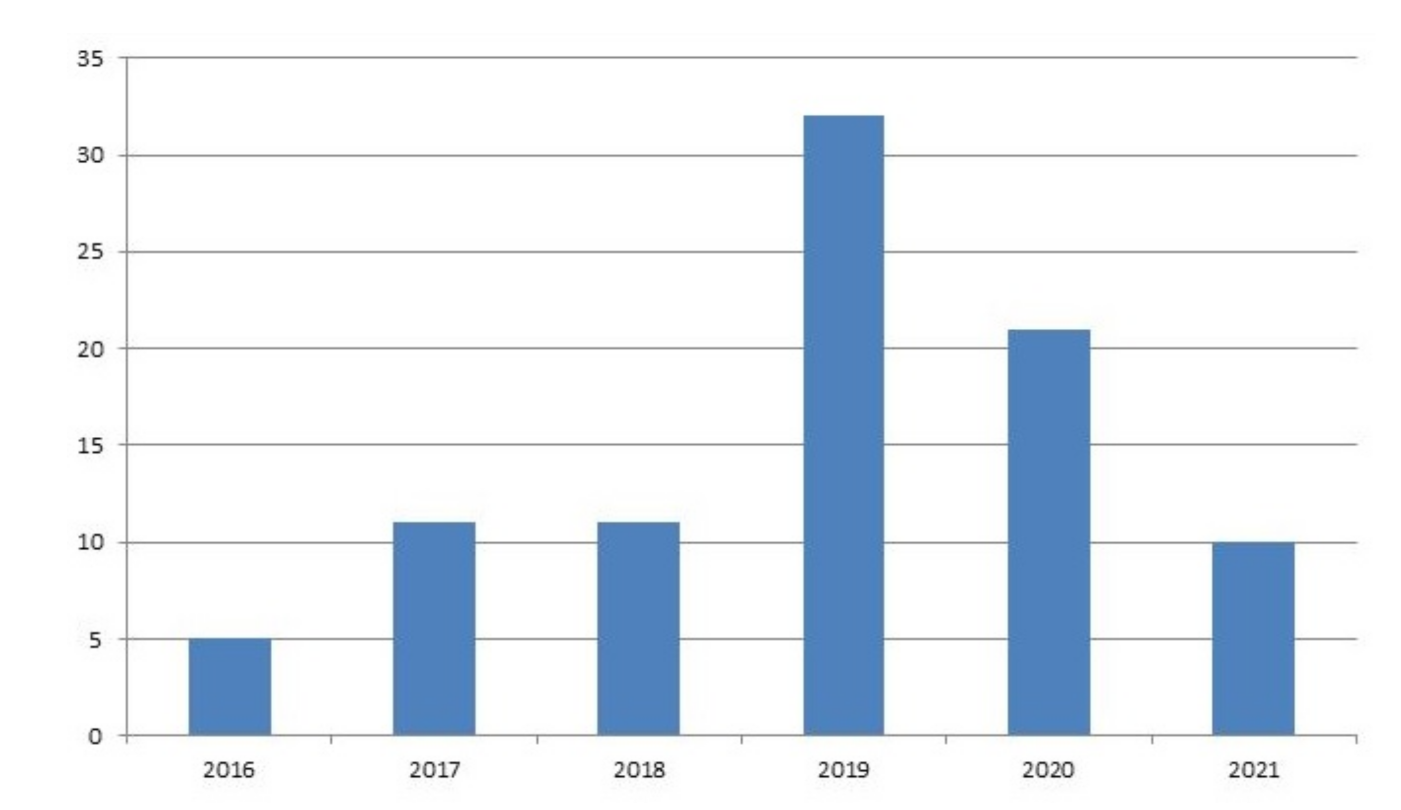
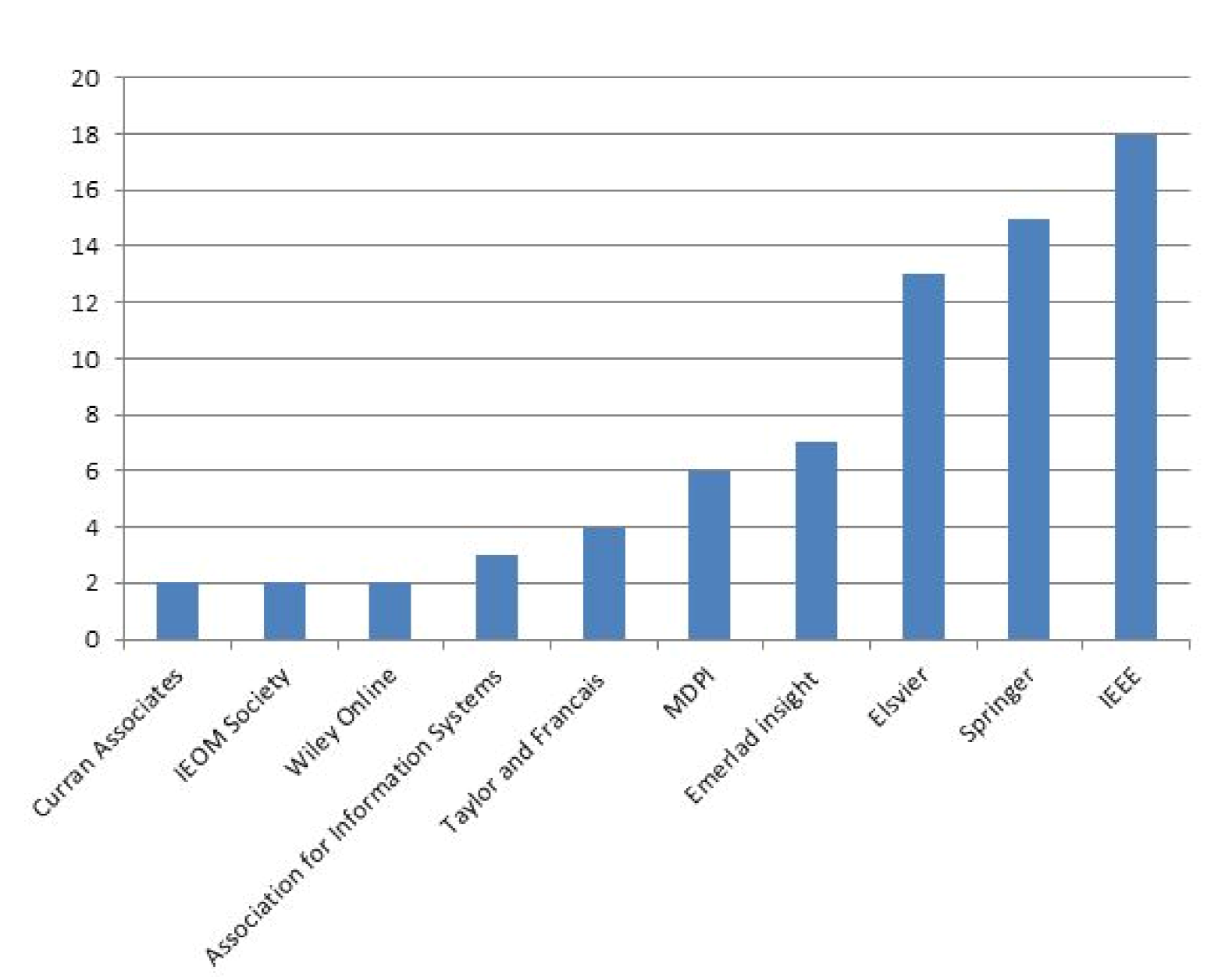
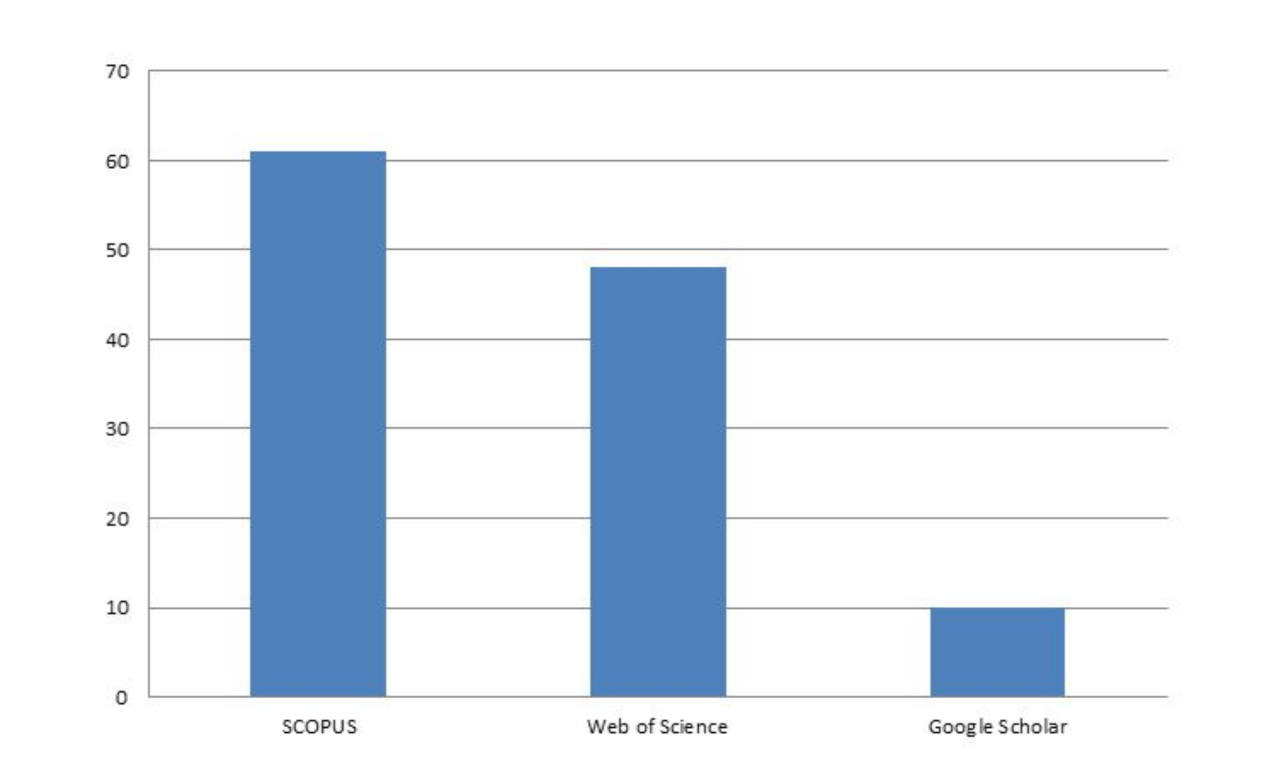
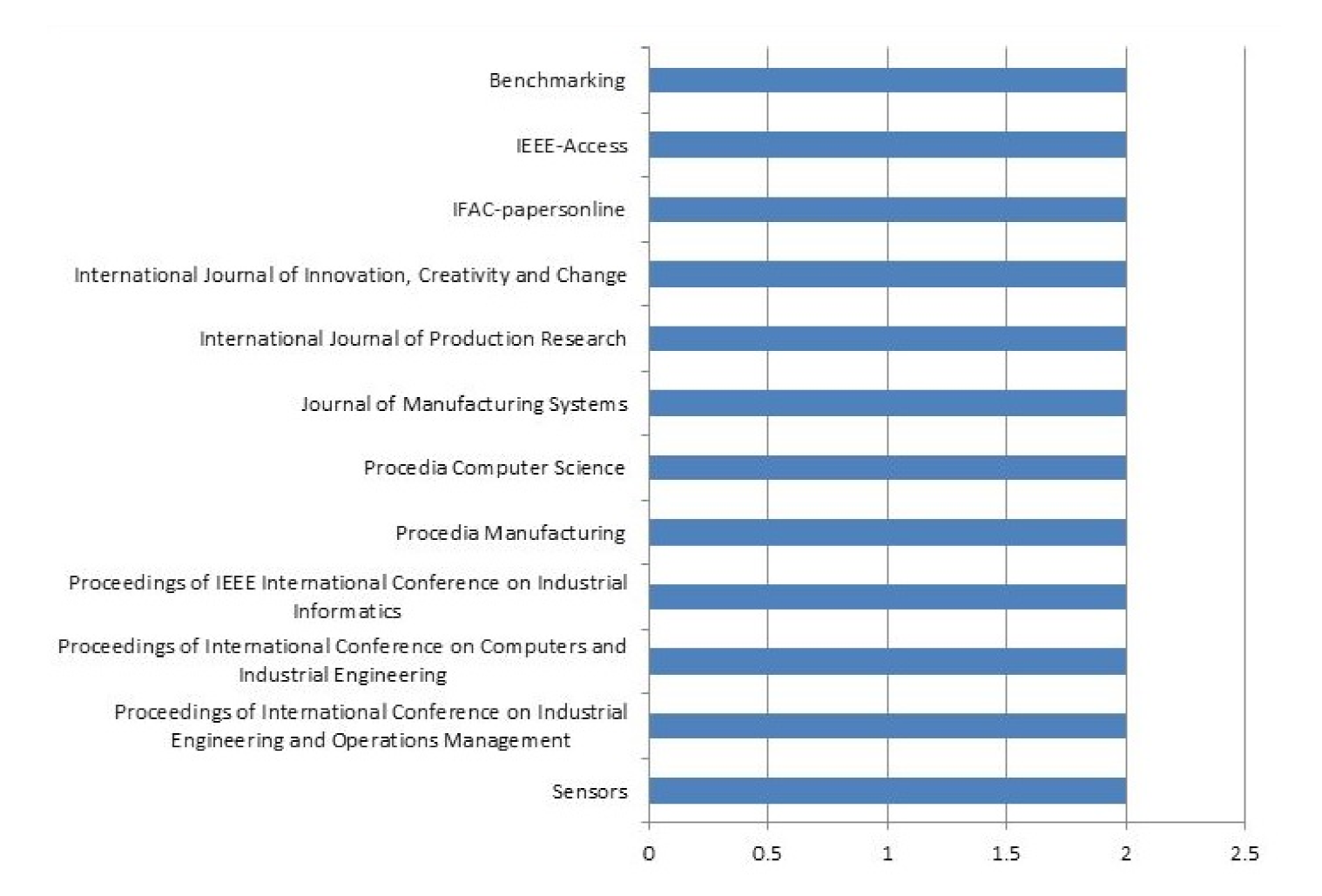

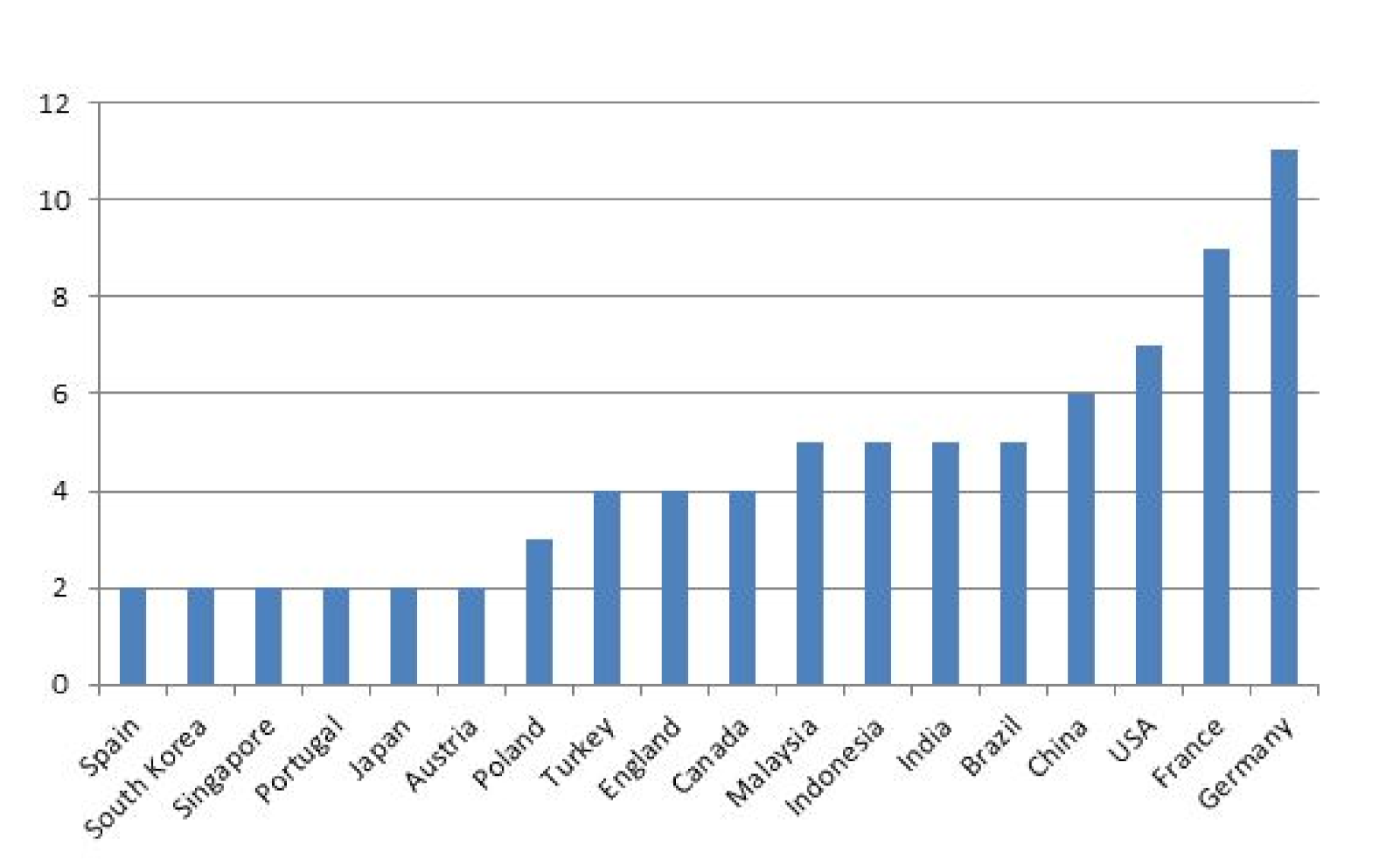
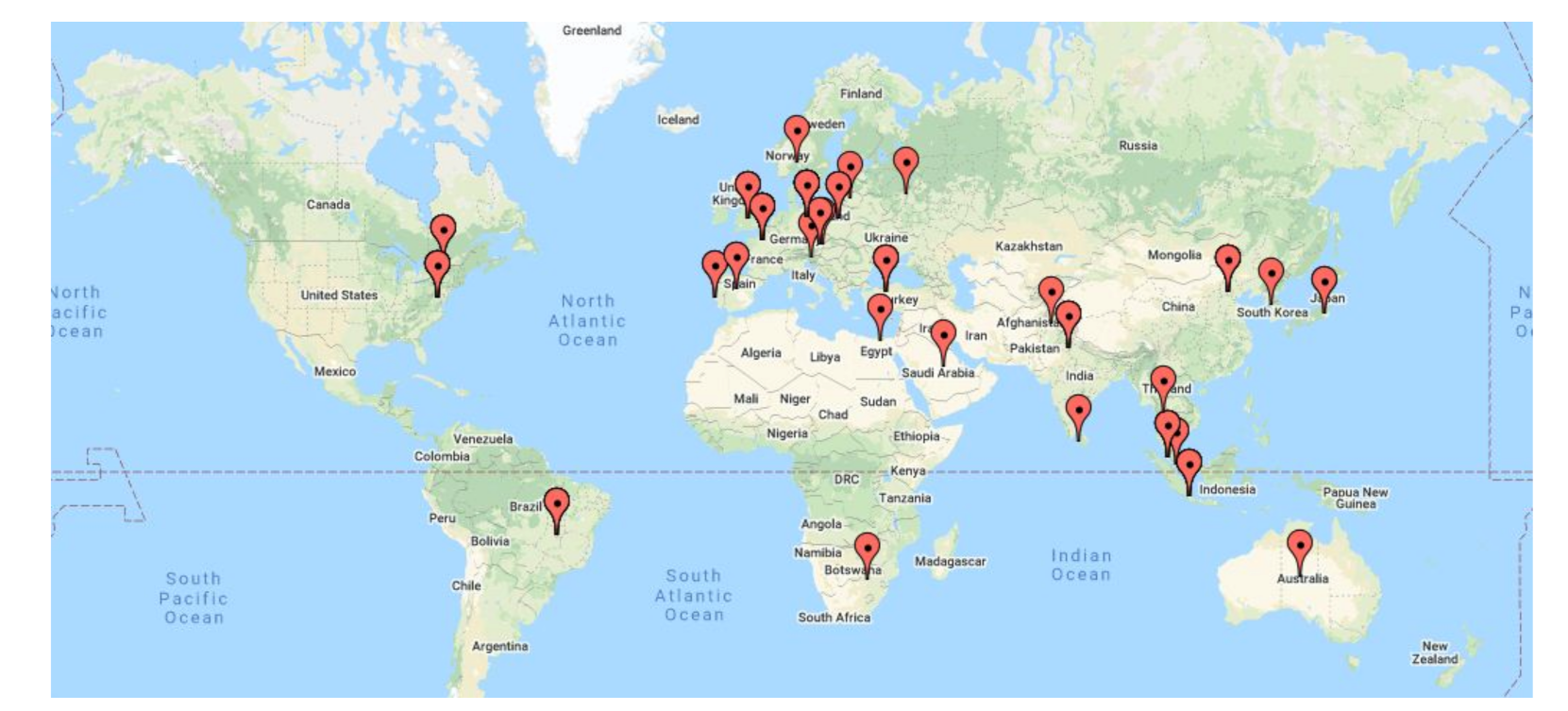
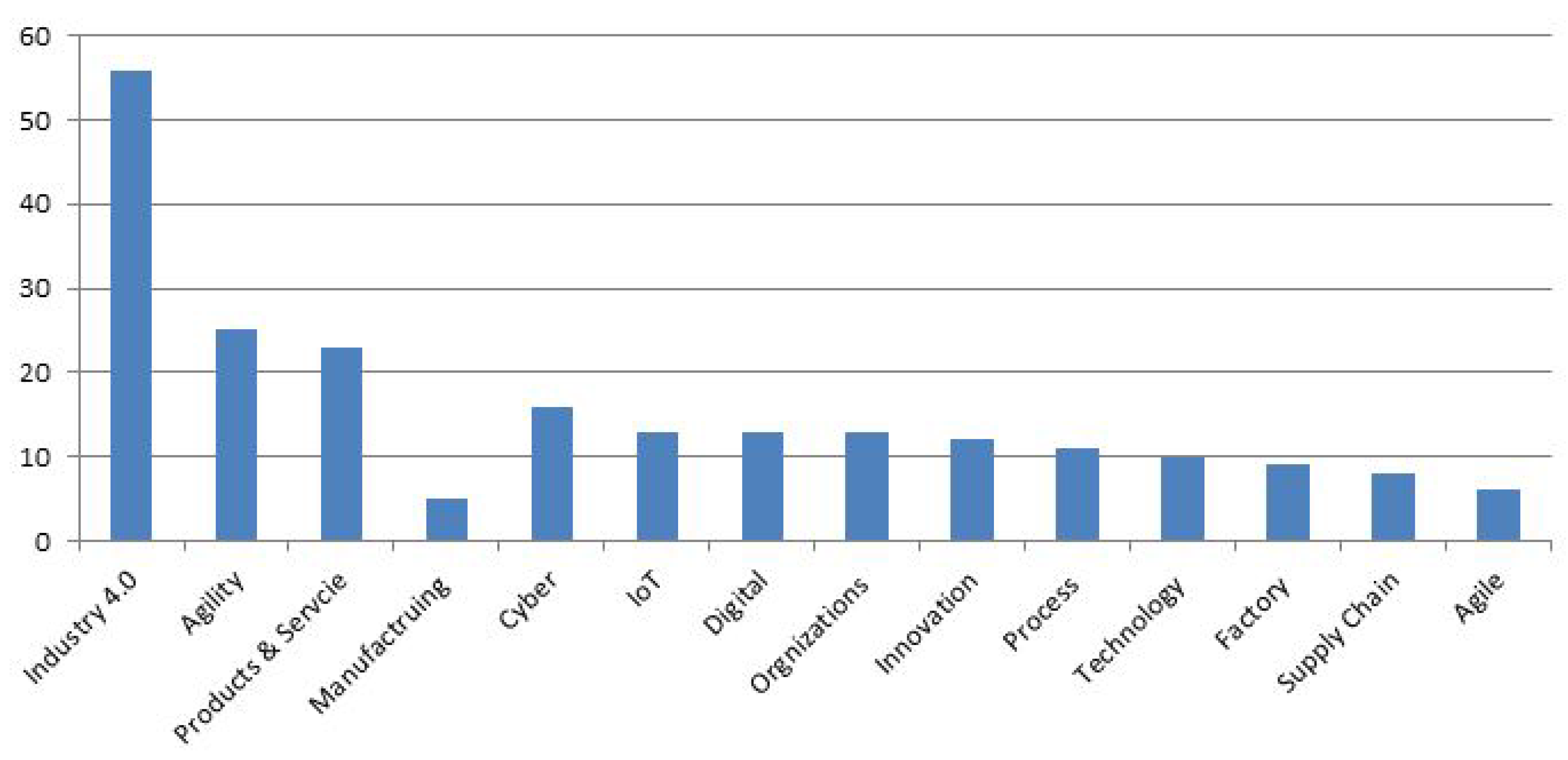
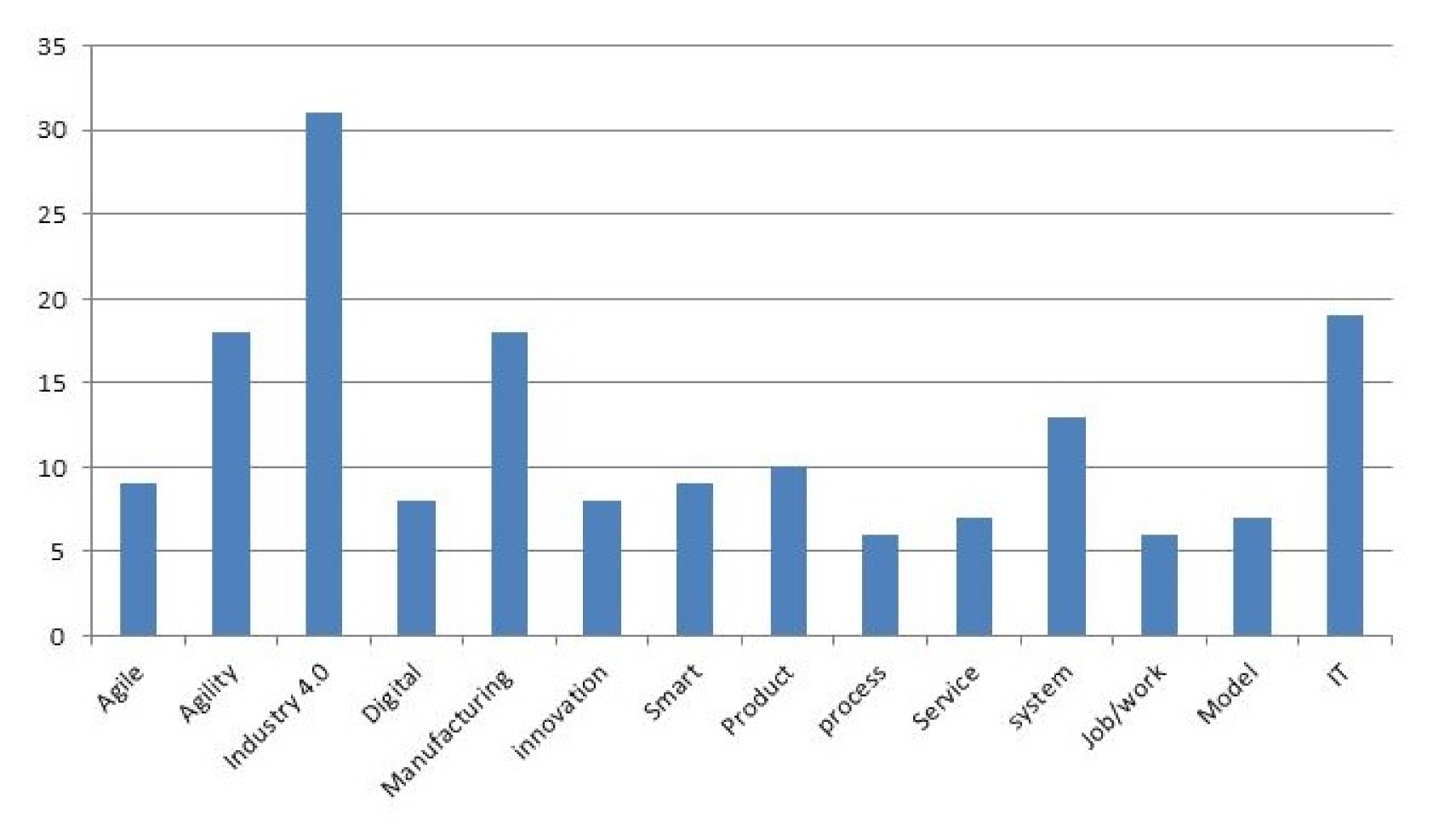
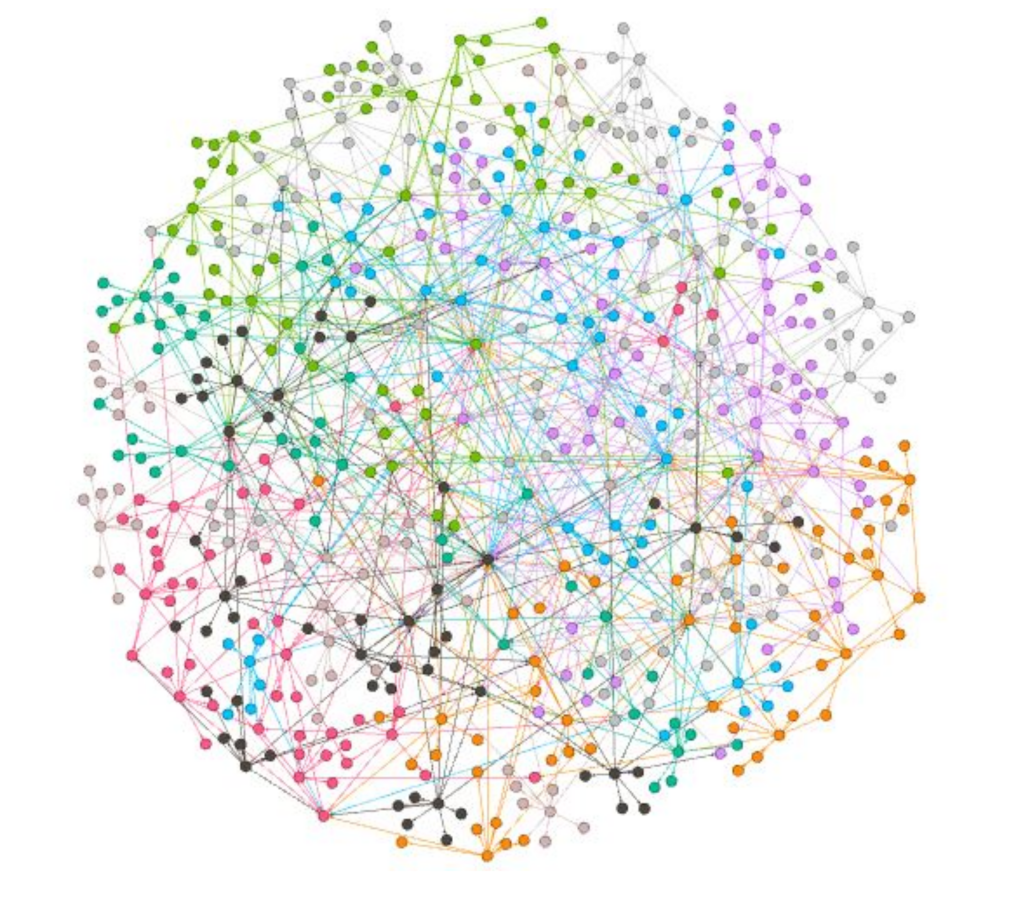
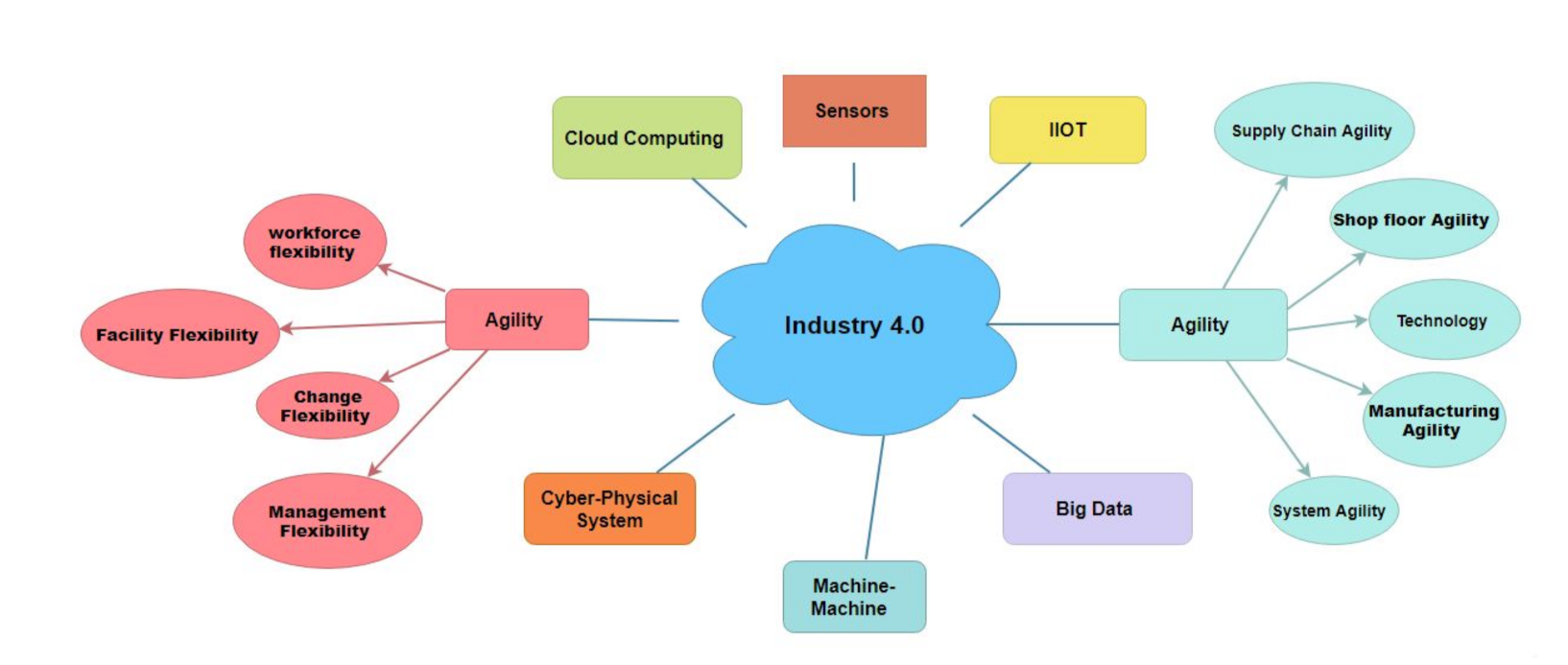
| No | Agility | Industry 4.0 |
|---|---|---|
| 1. | Agility | Industry 4.0 |
| 2. | Organizational agility | Fourth industrial revolution |
| 3. | Customer agility | Industrial revolution 4.0 |
| 4. | Supplier agility | I 4.0 |
| 5. | Manufacturing agility | Industry revolution 4.0 |
| 6. | Distribution agility |
| Title of Article | Year | Authors | Citations |
|---|---|---|---|
| Software-Defined Cloud Manufacturing | 2016 | Thames, L., Schaefer, D. | 295 |
| for Industry 4.0 | |||
| Reconfigurable Smart Factory for Drug Packing | 2019 | Wan, J. et al. | 52 |
| in Healthcare Industry 4.0 | |||
| A big data-enabled load-balancing control for smart | 2017 | Li, D. et al. | 51 |
| manufacturing of Industry 4.0 | |||
| CASOA: An Architecture for Agent-Based | 2017 | Tang, H. et al. | 51 |
| Manufacturing System in the Context of Industry 4.0 | |||
| A bi-objective model in sustainable dynamic cell | 2016 | Niakan, F. et al. | 48 |
| formation problem with skill-based worker assignment | |||
| Collaborative service-component integration in cloud | 2018 | Moghaddam, M., Nof, S.Y. | 46 |
| manufacturing | |||
| Transformative sustainable business models | 2018 | Brenner, B. | 26 |
| in the light of the digital imperative—a | |||
| global business economics perspective | |||
| Working life within a hybrid world—How digital | 2017 | Bauer, W., Schlund, S., Vocke | 23 |
| transformation and agile structures affect human | |||
| functions and increase quality of work | |||
| and business performance | |||
| Leadership 5.0 in Industry 4.0: Leadership | 2019 | Akkaya, B. | 21 |
| in perspective of organizational agility | |||
| Incorporating social sensors, cyber-physical system | 2017 | Ding, K., Jiang, P. | 21 |
| nodes, and smart products for personalized production | |||
| in a social manufacturing environment |
Publisher’s Note: MDPI stays neutral with regard to jurisdictional claims in published maps and institutional affiliations. |
© 2021 by the authors. Licensee MDPI, Basel, Switzerland. This article is an open access article distributed under the terms and conditions of the Creative Commons Attribution (CC BY) license (https://creativecommons.org/licenses/by/4.0/).
Share and Cite
Mrugalska, B.; Ahmed, J. Organizational Agility in Industry 4.0: A Systematic Literature Review. Sustainability 2021, 13, 8272. https://doi.org/10.3390/su13158272
Mrugalska B, Ahmed J. Organizational Agility in Industry 4.0: A Systematic Literature Review. Sustainability. 2021; 13(15):8272. https://doi.org/10.3390/su13158272
Chicago/Turabian StyleMrugalska, Beata, and Junaid Ahmed. 2021. "Organizational Agility in Industry 4.0: A Systematic Literature Review" Sustainability 13, no. 15: 8272. https://doi.org/10.3390/su13158272
APA StyleMrugalska, B., & Ahmed, J. (2021). Organizational Agility in Industry 4.0: A Systematic Literature Review. Sustainability, 13(15), 8272. https://doi.org/10.3390/su13158272







